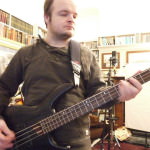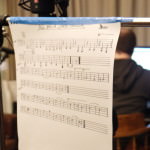Sunday 6 January, 2013
Up until now these blogs have focused on our general progress and doubled as an emotional compass of sorts. I thought it may be time to get a little more technical though. But this really isn’t my area of expertise… as far as I’m concerned I just sing into a magic box and the fairies do the rest. So I asked Dan (the Debt Records technical director, Bedlam bassist, co-founder of WR Audio and our engineer for this recording project) a few questions that may be on some readers’ minds…
***
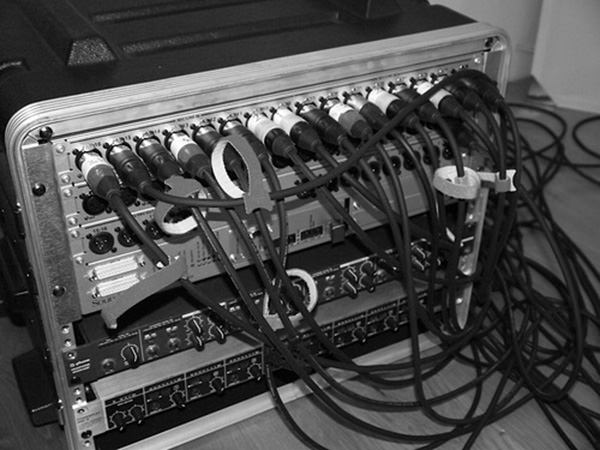
What are the challenges of recording in a house rather than a custom made recording studio?
Noise is obviously an issue, us annoying neighbours with drums etc and noise from outside getting into our mics. Acoustics is the other issue, normal sized rooms in houses with plastered walls tend to have a boxy almost twangy sound to them. This can be combatted using acoustic baffles and its astonishing how affective a humble duvet hung behind the microphone can be.
What do you take into account when investigating each space?
I basically just go around clapping. If you know what you’re listening for you can gauge the sound of the room from a couple of claps. Any metallic twang is generally bad, we chose the library for most of our work and to act as the main control room because all the books (plus almost no flat surfaces) make it a very neutral dry room. The hallway is good too as that has an interesting big bright reverb.
We spent a lot of time getting the drums right. What are the actual differences between the various shapes and sizes of microphone clamped onto the kit?
There are three basic types of microphone:
- Condenser
- Dynamic
- Ribbon
Each has its own character and every mic within those three general categories sounds different to each other – condensers are sensitive and detailed; ribbons are warm with a rolled off top end; dynamics can deal with high sound pressure levels and have become synonymous with certain sounds. Bass, Snare and Tom Drums suit dynamics (generally speaking), condensers are better for cymbals and an overall drum kit sound. We didn’t use any ribbons but they can work well as overheads.
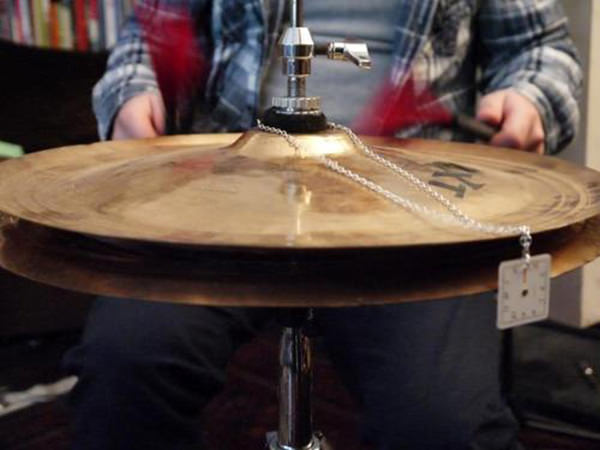
In the past we’ve struggled with recording vocals in a way we were happy with. Surely it’s not that difficult? What’s the problem and have we solved it this time?
Louis has quite an aggressive voice. In technical speak when he sings louder the frequencies around 3-5khz become very pronounced. A lot of mics that already have a natural presence peak at this frequency, so when these two factors are combined it results in a very strident sound. The mic he now uses for our live shows has very small presence peak compared to most live mics. In the studio we have ended up using two mics at the same time to get the detail and warmth we need. We also tend to lean on dynamic eq to dip those frequencies but only when they’re loud enough to set off the processor.
What are the common mistakes people make in sizing up the “professionalism” of one recording setup compared to another?
People seem to have a fascination with what microphone pre-amps studios use. I get asked a lot whether I have this pre-amp or another. In truth (and this has been proved in a number of blind tests) modern pre-amps are almost impossible to tell apart. The room you record and mix in is the key – great studios have great rooms, quality instruments, a selection of good mics and (probably most importantly) top engineers who know what they’re doing. These days even the most basic recording setups are capable of better results than on most records from the 60s and 70s so it really is down to the person operating it. Oh, and the musicians of course, they make a difference!
Why do people still favour expensive studios rather than just finding a decent room and investing in some good mics (or getting someone like you to help them for a fraction of the price?)
They’re playing at being rock stars essentially, plus a presumption that fancy studio equals great result. Of course, in reality, the principal limiting factors are time, effort and ability, not what studio you use.
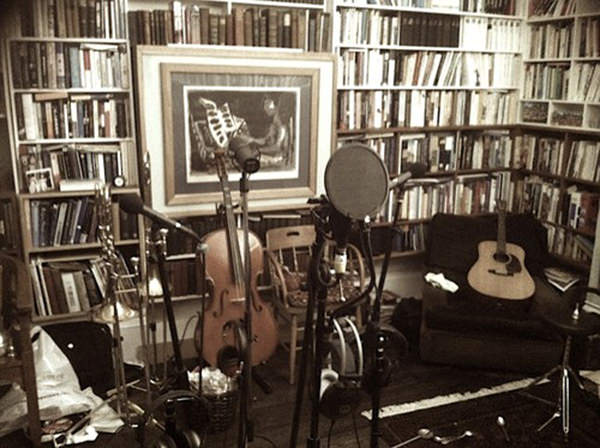
Would the recording setup in the Bedlam studio house suit all bands or are there some genres that need a different treatment? Would you recommend this process to others planning to record an album?
I would always recommend a process which has musicians living and working together. The process of one musician recording their part, then another, then another without them ever being in the same room tends to suck all the life out of a recording. As for the specific set up I think it would suit any band playing instruments from any genre. Electronic and dance music tend to have different tech requirements though.
Are there any problems you expected before we started? Did they manifest themselves as predicted and if so how were they overcome? Any nasty surprises?
I tend to over-plan everything. I hate not having detailed technical specs of bands before a gig and, in the same vein, I will plan a recording session down to every eventuality so generally speaking most surprises end up being good ones. It helps that we know this set up backwards and we always check all the wires etc work properly before we leave for the session, this saves on tracking down faults when you get on location.
All that’s left is for everyone to stay friends for the duration of the recording process!
- © Sara Harris 2013
- © Sara Harris 2013
- © Sara Harris 2013
- © Sara Harris 2013
- © Sara Harris 2013
- © Sara Harris 2013





